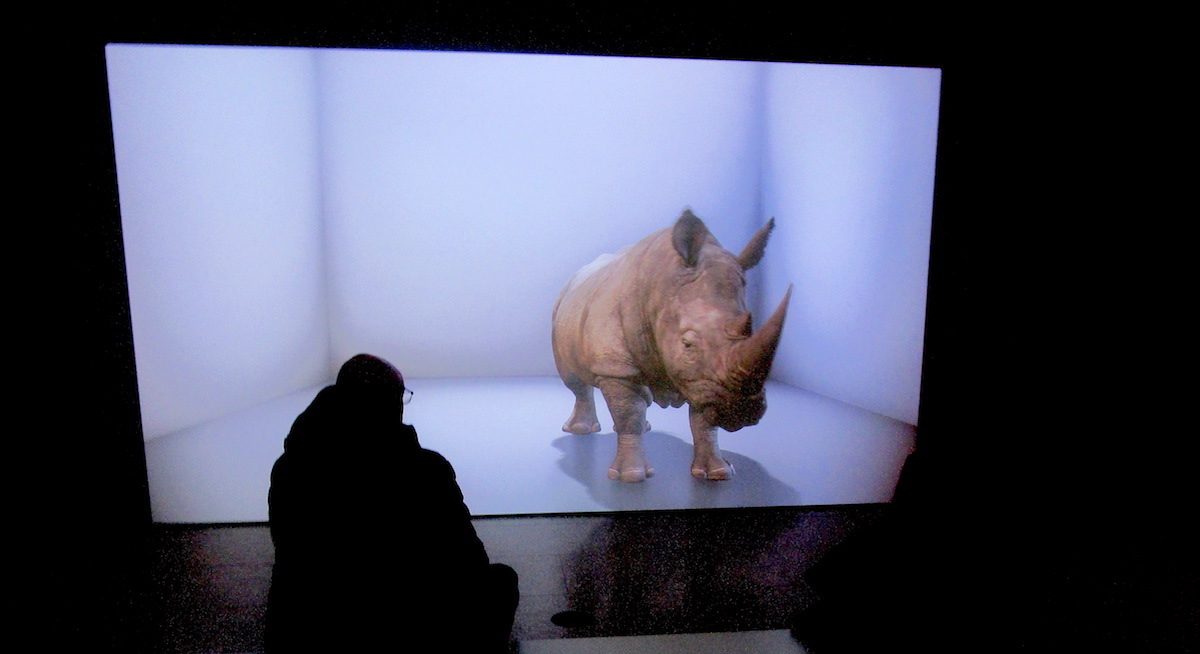The Eco-Visionaries show just opened at the Royal Academy, in its new set of galleries (easiest entry via Burlington Gardens) embraces the current fashion for moralistic participation. You don’t just visit an exhibition of this kind – wandering around, taking a look, liking or not liking what you see. You are instead invited to embrace a cause or even a series of causes.
As the handout for the exhibition tells you:
“We are facing an ecological emergency. According to the United Nations, if we want to avoid a climate breakdown, carbon emissions must be cut by 45% by 2030 and reach zero by 2050. We are no longer discussing an environmental catastrophe that might impact future generations, but a catastrophe that will now drastically impact our own. We need to take action, but we also need to understand the scale of this complex problem in order to understand the scale of this complex problem to define the changes that must be made.”
So far, so good. Museums, and also major semi-official institutions such as the R.A., now often regard themselves as centres for moral leadership. In this, they are re-assuming a role that official galleries of this sort had already begun to take over from the church (in its various conflicting denominations) during the second part of the 19th century. That is until these efforts at moral leadership were knocked off course by the bad boys of the Modern Movement. Picasso, whatever else he was, can hardly be regarded as a consistent moral exemplar, despite some efforts in that direction – first with Guernica, secondly – less successfully – with Les Massacrés de Korée, a denunciation of Western intervention, not of the nascent North Korean regime.
What is new about these contemporary moralising art events is that fact that they now often require direct participation on the part of the audience they are addressing. Put on the headphones. Sit there for a given period of time and watch this narrative film. It has a beginning, a middle and an end. If you get bored and walk out, you are morally suspect.
Given the genre it belongs to, Eco-Visionaries is a superior example of this kind of moralising show. The catastrophe it envisages is indeed approaching us and the participating artists make imaginative use of the latest technological means to ram home the lessons they are anxious to impart.
The image I liked best, maybe because it required the least effort on my part, was a projection called The Substitute by Alexandra Daisy Ginsberg, originally commissioned by the Cooper Hewitt Museum in New York. I can’t do better than quote an official description, borrowed from the web:
“The Substitute explores a paradox: our preoccupation with creating new life forms while neglecting existing ones. A northern white rhino is digitally brought back to life, informed by developments in the human creation of artificial intelligence (A.I.). Based on research from A.I. lab DeepMind, the rhino performs as an artificial agent, an autonomous entity that learns from its environment. A life-size projection, 5m wide, shows the artificial rhino roaming in a virtual world, becoming more “real” as it comprehends the limits of the space. As the artificial rhino habituates to its space, its form and sound toggle from pixilation to lifelike—reminding the viewer that this living, breathing rhino, coming to life without its natural context, is entirely artificial.”
Yes, there’s a kind of magic here, which overcomes the impulse to preach. The magic of modern technology that preserves the likeness of an about-to-be-extinct living creature. Which seems alive but isn’t. The pixels coming together, before you see the complete, apparently autonomous image, tell you what the real situation is.
Words/Photo: Edward Lucie-Smith © Artlyst 2019
Eco-Visionaries – Confronting a planet in a state of emergency – 23 November 2019 — 23 February 2020
Read More About Eco-Visionaries

